Abstract
Chronic actinomycetoma associated with grain production was induced in BALB/c mice by subcutaneous inoculation of live Nocardia brasiliensis in Freund incomplete adjuvant into the hind footpads. Similar inoculation of N. asteroides and N. caviae resulted in local tumor formation which healed spontaneously after 5 months, the disease disseminating into the peritoneum, where masses or organisms could be detected. Grains were recovered from superficial skin lesions of N. caviae, but not from the N. asteroides-infected mice. Mycetoma lesions, appearing as early as 1 month after inoculation of 1.2 X 10(7) colony-forming units of N. brasiliensis per ml or as late as 3 months with inoculation of 1.0 X 10(5) colony-forming units per ml, became persistent and were readily detectable even 6 months after inoculation. No spontaneous healing occurred, and grains were recovered at different stages of the disease. Saline suspensions of N. brasiliensis also produced typical mycetoma lesions, although the incubation period was ca. 6 months. Adjuvant addition appeared to accelerate the onset of the disease. Experimental production of actinomycetoma in laboratory animals allows the study of many unanswered aspects of the disease and also provides a suitable model for therapeutic trials in the search for new and more effective chemotherapeutic agents.
Full text
PDF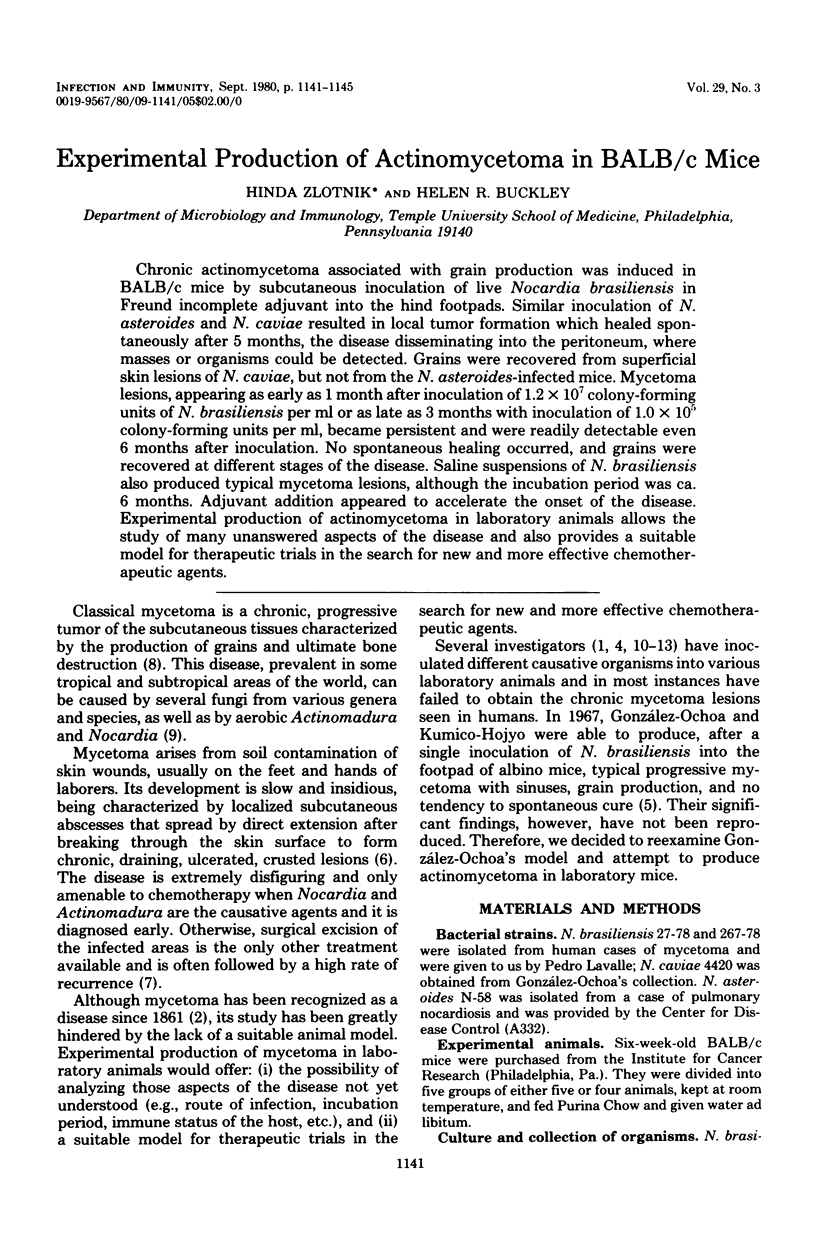
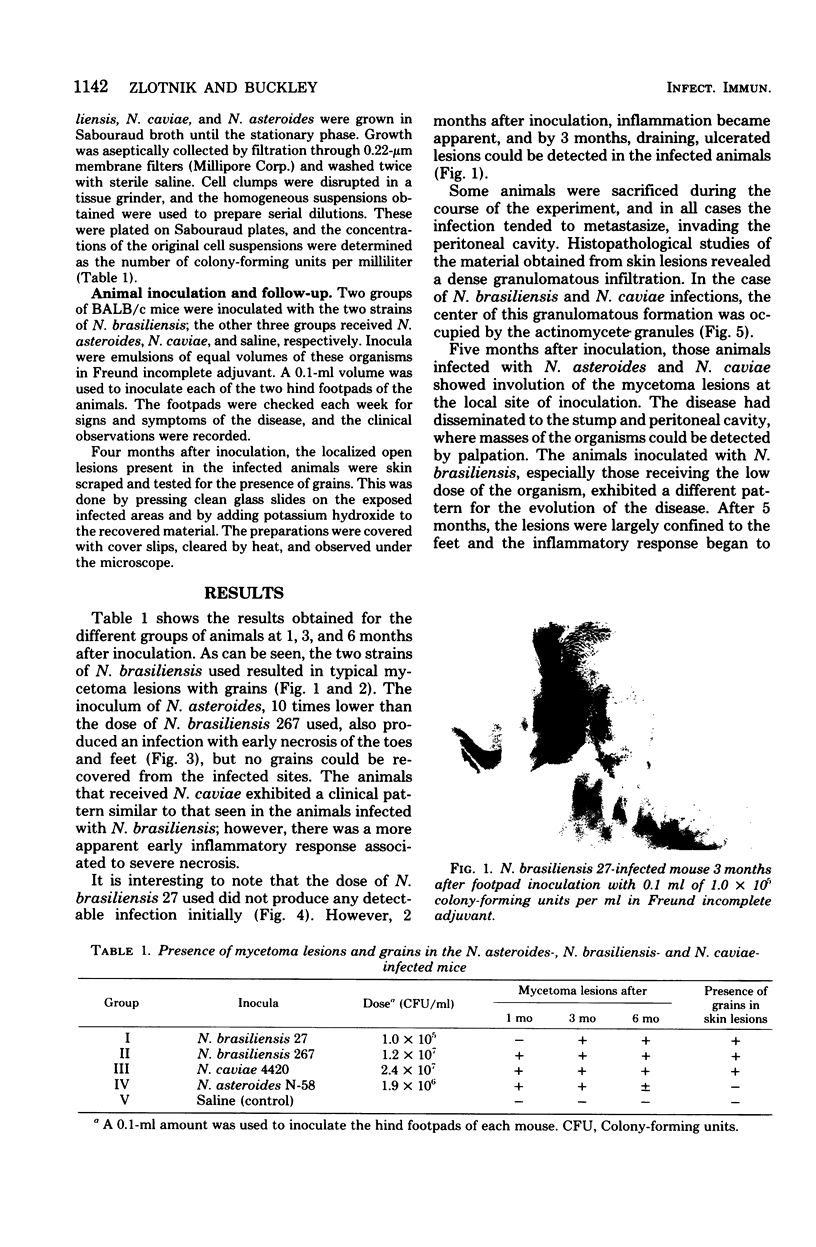
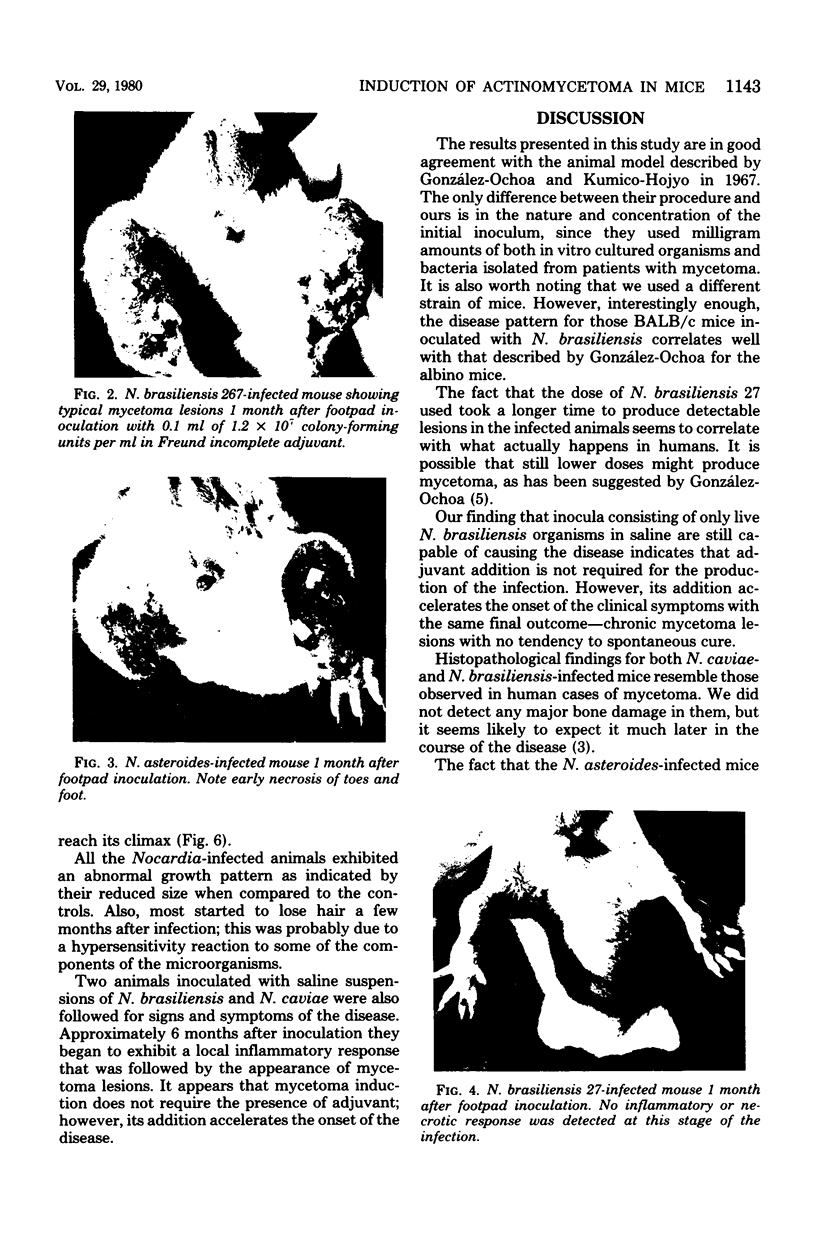
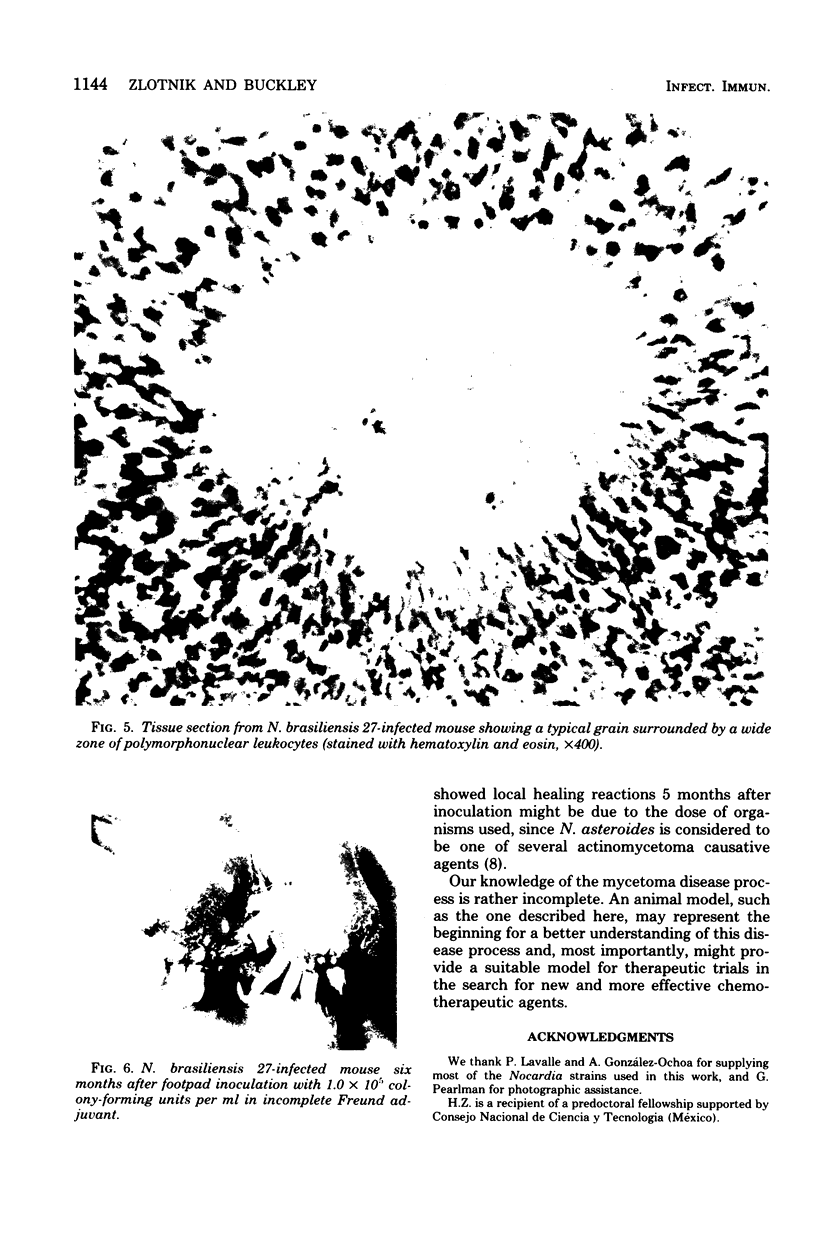
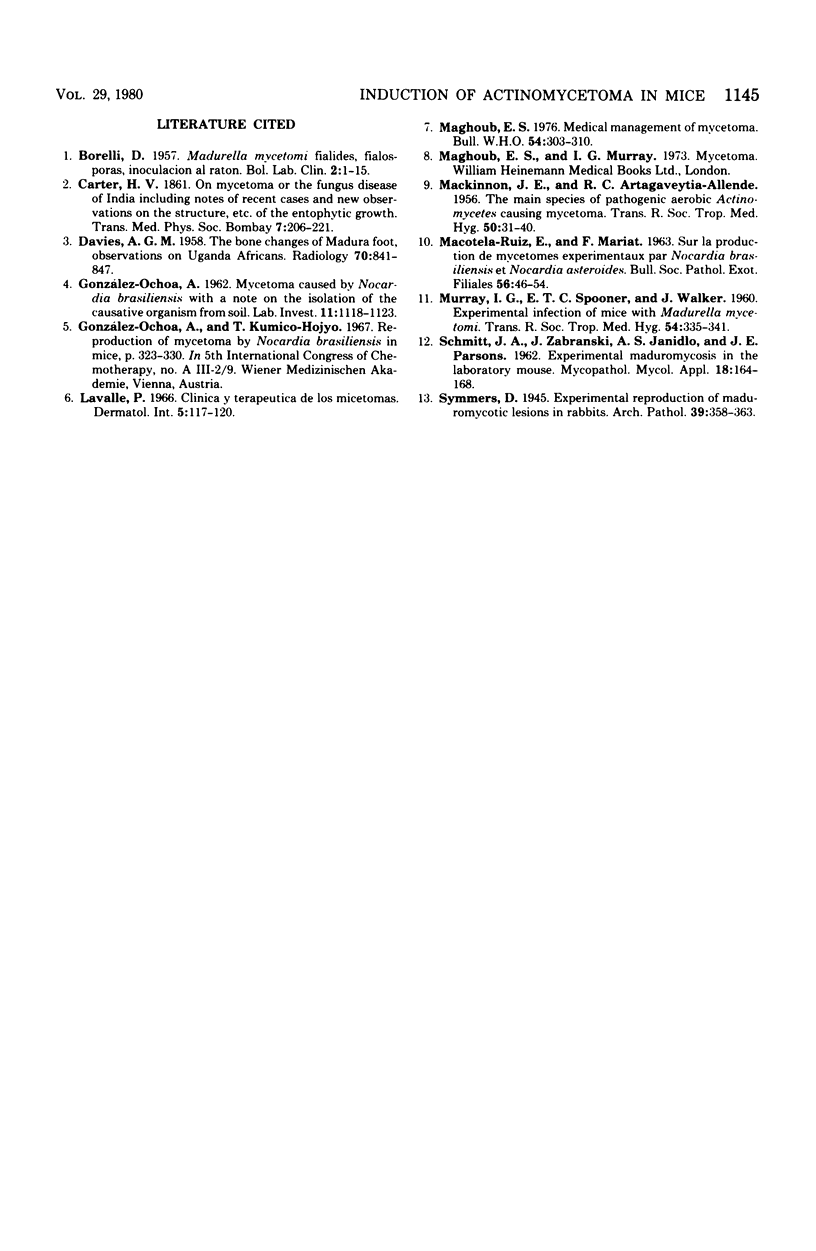
Images in this article
Selected References
These references are in PubMed. This may not be the complete list of references from this article.
- DAVIES A. G. The bone changes of Madura foot; observations on Uganda Africans. Radiology. 1958 Jun;70(6):841–847. doi: 10.1148/70.6.841. [DOI] [PubMed] [Google Scholar]
- Lavalle P. Clinica y terapeutica de los micetomas. Dermatol Int. 1966 Apr-Jun;5(2):117–120. [PubMed] [Google Scholar]
- MACKINNON J. E., ARTAGAVEYTIAALLENDE R. C. The main species of pathogenic aerobic actinomycetes causing mycetomas. Trans R Soc Trop Med Hyg. 1956 Jan;50(1):31–40. doi: 10.1016/0035-9203(56)90005-0. [DOI] [PubMed] [Google Scholar]
- MURRAY J. G., SPOONER E. T., WALKER J. Experimental infection of mice with Madurella mycetomi. Trans R Soc Trop Med Hyg. 1960 Jul;54:335–341. doi: 10.1016/0035-9203(60)90114-0. [DOI] [PubMed] [Google Scholar]
- OCHOA A. G. Mycetomas caused by Nocardia brasiliensis; with a note on the isolation of the causative organism from soil. Lab Invest. 1962 Nov;11:1118–1123. [PubMed] [Google Scholar]
- SCHMITT J. A., ZABRANSKY R. J., JANIDLO A. S., PARSONS J. E. Experimental maduromycosis in the laboratory mouse. Mycopathol Mycol Appl. 1962 Nov 10;18:164–168. doi: 10.1007/BF02051585. [DOI] [PubMed] [Google Scholar]








